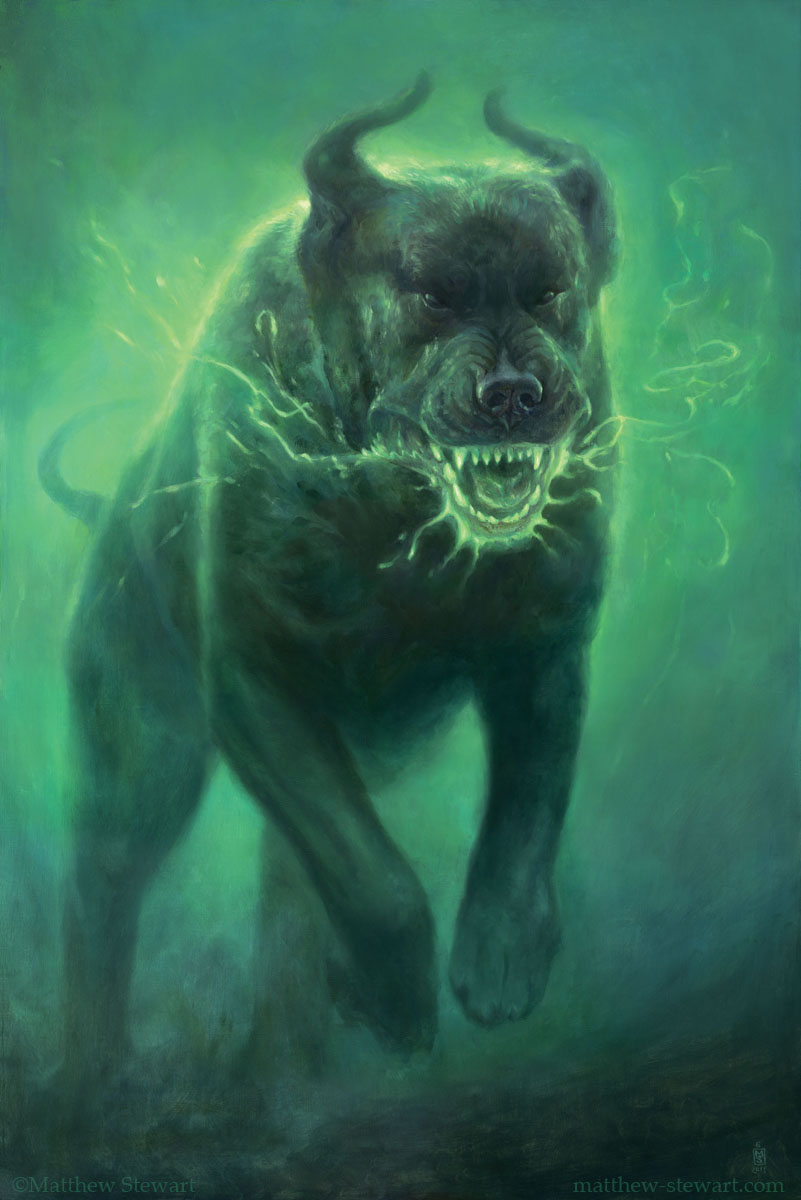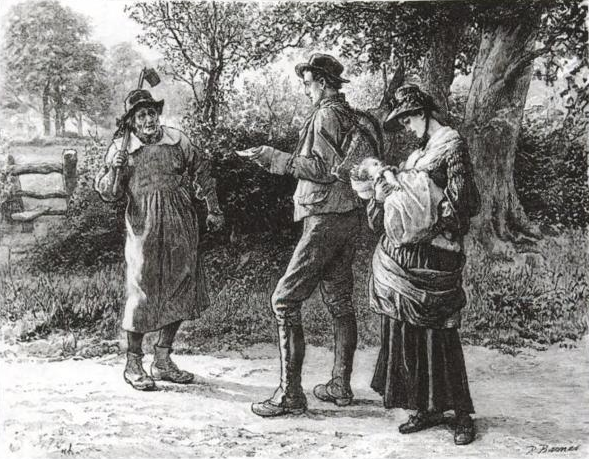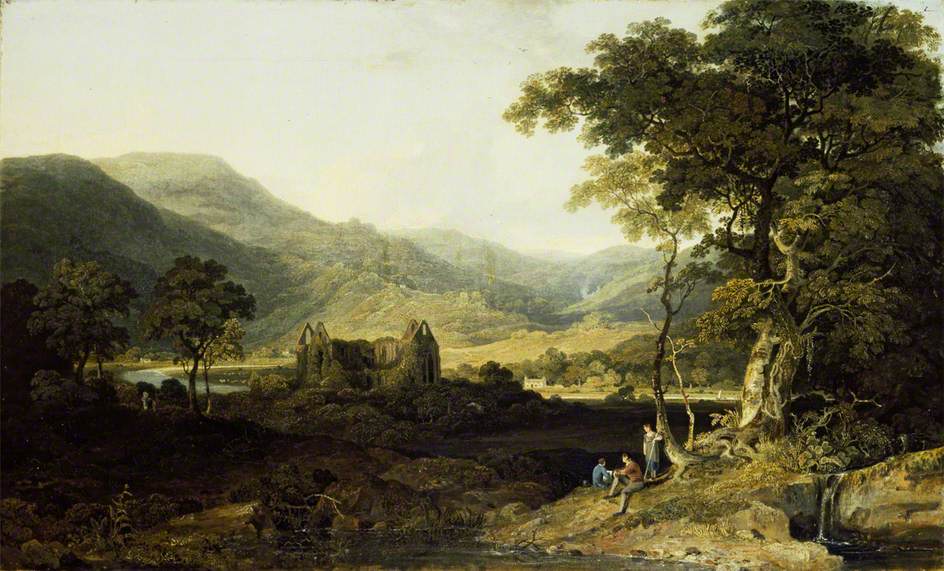Home » Posts tagged 'landscape'
Tag Archives: landscape
The Hound of the Baskervilles
Arthur Conan Doyle
1902
(The scientific minds of Holmes and Watson are tested by howls on the moor, the legend of a fiery hell-hound, and a giant pawprint next to a dead nobleman.)

A novel-length Sherlock Holmes mystery! The readers of the Strand Magazine must have been delighted. They must have vigorously discussed with each other the prospects of the case between installments. Releasing a detective story by degrees has got to be risky, since the readers have so much time to figure everything out. There are enough threads interwoven in this story, though, and enough minor details that must be incorporated into a solution, that I suspect almost everyone will be surprised at something in the denouement. Besides, we would need a healthy dose of luck to solve the riddle ourselves, for there are crucial elements about which we can only guess during the narration. These are revealed to us only after Holmes has discovered them and solved the case in his mind. In this way, Doyle all but ensures that competition with the sleuth is beyond our grasp.
Although the most haunting aspect of the typical Sherlock Holmes case is nothing more than the dense fog of pipe smoke around the detective’s chair, Doyle did have an interest in spiritualism, and wrote a few books on the subject. In The Hound of the Baskervilles he combines these two interests by infusing the tale with a strong atmosphere of macabre otherworldliness. Probably more than the facts of the case or its solution, the damp darkness and chilling moans of the moor are likely to remain with us long after we have finished reading the book.
The Mayor of Casterbridge
Thomas Hardy
1886
(The fortunes of a strong-willed hay-trusser prove to be as volatile as he is.)

Michael Henchard is an unemployed field laborer who, under the influence of rum at a fair, impulsively starts to auction off his wife and baby daughter, to much laughter. His wife stands. A hush falls as a sailor actually puts five guineas on the table.
“Now,” said the woman, breaking the silence, so that her low dry voice sounded quite loud, “before you go further, Michael, listen to me. If you touch that money, I and this girl go with the man. Mind, it is a joke no longer.”
But Henchard will not be shamed or threatened. When he says something he means it! And so minutes later he sits there blinking away his disbelief as Susan, with little Elizabeth-Jane, walks away with a stranger. Thus begins The Mayor of Casterbridge: The Life and Death of a Man of Character. Here we see how a person’s destiny is shaped by the interaction of external forces and internal qualities– the world and the self. Take one part circumstance, add one part decision, repeat continually towards success or failure.
The Oregon Trail
Francis Parkman
1848
(Horses, rifles, and knives see a party of adventurers through the land of expansive plains, craggy mountains, buffalo, and the Sioux.)

“Shaw! Buddy!” Imagine a young, spontaneous Yankee calling out to his friend, both of them just out of college. He proposes that they leave the effeminate comforts of the East, and spend a summer adventuring westward into the untamed lands where life is dangerous and fascinating. Francis Parkman explains (ch.II):
“The restlessness, the love of wilds and hatred of cities, natural perhaps in early years to every unperverted son of Adam, was not our only motive for undertaking the present journey. My companion hoped to shake off the effects of a disorder that had impaired a constitution originally hardy and robust; and I was anxious to pursue some inquiries relative to the character and usages of remote Indian nations, being already familiar with many of the border tribes.”
So they did it. In 1846. Francis was 23. And the recollections of that journey, The Oregon Trail: Sketches of Prairie and Rocky-Mountain Life, remain with us as one of the best treatments of the early West that we will ever have. Parkman’s prose has the feel of a chronicle—it is obviously nonfiction, a travelogue. But it is not a ponderous journal of trivia and redundancy through which we must wade for hours to find the few interesting episodes; nor is each sunset a springboard for a forced flight of sentimental fancy in poor imitation of Byron’s Childe Harold or other Old World sketches. Rather, it is an engaging selection of vignettes, personalities, and anecdotes that admit us to the ranks of the “ragamuffin cavalcade” that was Parkman’s expedition. Parkman’s writing is like Parkman himself—the stereotypical American at his best, one might say: direct yet perceptive, practical yet romantic, hearty yet insightful.
Lyrical Ballads, and other early poems
William Wordsworth
1785-1799
(A poetic sage takes lessons on goodness and beauty from nature.)

A man of wisdom, a poet of nature, is Wordsworth. These are the goals to which he aspires, goals that are discernable in his work from a very early age. He wrote many of his greatest poems in the years covered here, before he reached 30. Wisdom, or more specifically a yearning for and contemplation of goodness and beauty, suffuses his poetry. Thus he is keen to deliver moral advice, and almost seems to teach or prophesy rather than reflect. But it is the deepest and most profitable kind of reflection, I can almost hear him replying, whose results teach the reflector something. And since he insists in the Preface to his Lyrical Ballads that he writes each poem with a purpose, and with the intent of delivering objective truths rather than ideas that one may take or leave as a matter of preference, we must prepare for a slight didactic or pedagogical flavor now and then. For Wordsworth, though firmly against elitism in poetry, is aware of his own wisdom, and is driven to share it with others. The topics range from attitudes towards people (as in “Matthew”), to attitudes towards nature (as in “Lines Written in Early Spring”), to a straightforward exhortation to be good (as in “Goody Blake and Harry Gill”). He imparts his values on social matters as well, regarding for instance the evil of slavery (at the end of “Descriptive Sketches”), the necessity of legislated charity (at the beginning of “The Old Cumberland Beggar”), and thoughts on education (e.g. “Expostulation and Reply”).



A Sand County Almanac
July 9, 2014 / 3 Comments on A Sand County Almanac
Aldo Leopold
1948
(An ecologist contemplates and celebrates the land, and recommends an expansion of our moral world.)
In today’s courses on ecology, forestry, conservation, environmental philosophy or land use, three personalities are routinely introduced as the fathers of modern concern for nature, the three who first and most strongly urged us to enlarge our conception of what in this world is a proper object of moral consideration: Henry David Thoreau, John Muir, and Aldo Leopold. Contemporary American (and to some extent world) culture has been impacted by A Sand County Almanac, as by Thoreau’s Walden, to such an extent that we cannot yet begin to assess it. Nevertheless, I would argue that we as a culture have still not attended to the two main lessons A Sand County Almanac would teach us.
(more…)